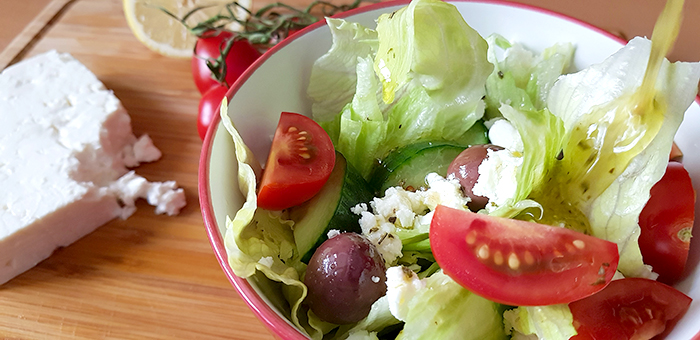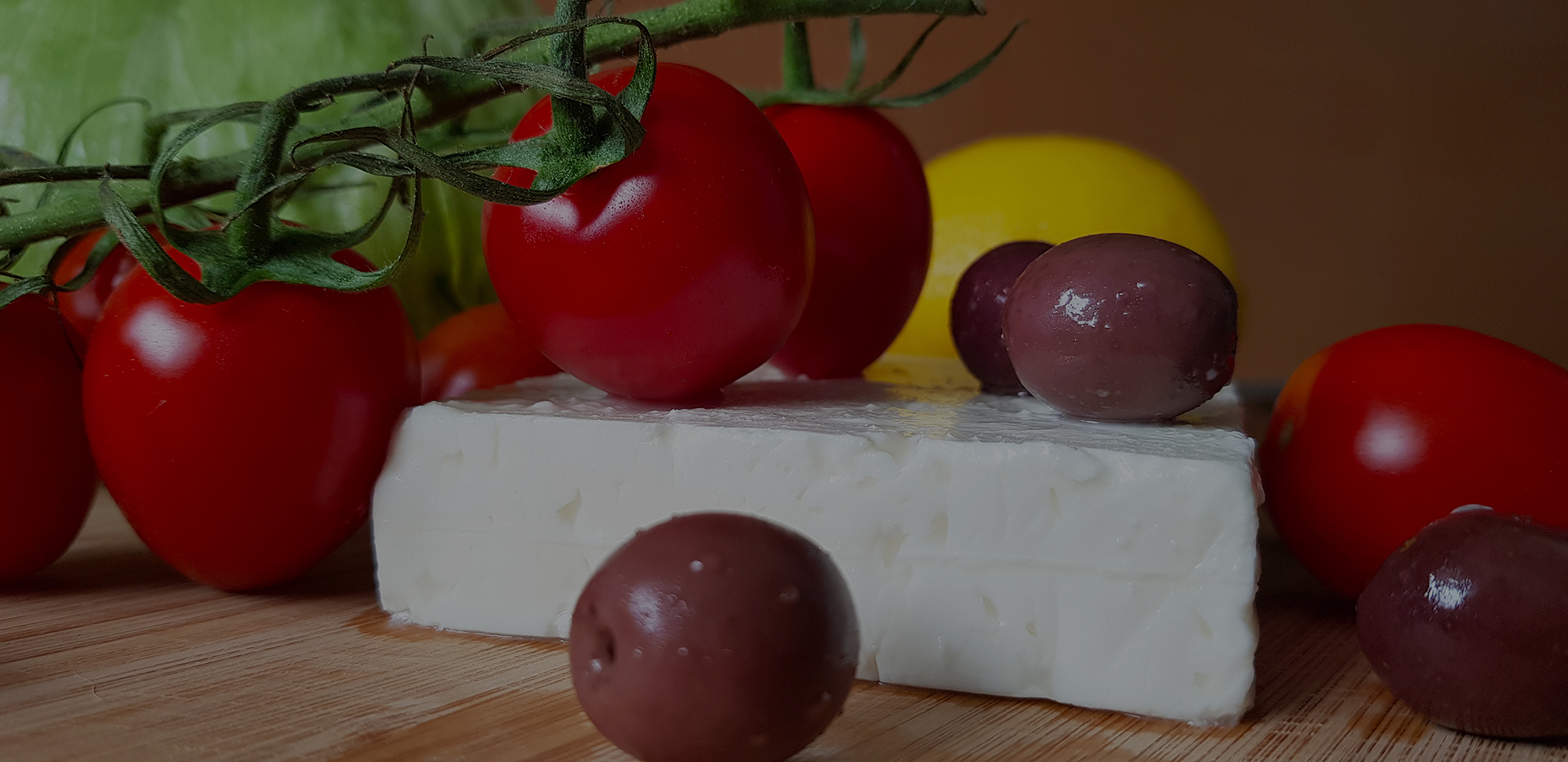When you think of Greek salads, crumbly feta and chunks of red onion may come to mind. This is especially true if you’re trying to avoid FODMAPs, and are wondering if they will cause digestive symptoms!
The good news is, you can still enjoy a fresh, satisfying Greek salad, even if you’re limiting your FODMAP intake. With a few tweaks to the traditional Greek salad recipe, you can add this to your low-FODMAP rotation.
What are FODMAPs?
FODMAPs are a family of sugars that can pass through the digestive system without being fully absorbed. Bacteria ferment the FODMAPs once they reach the large intestine, which creates gases. In people with a sensitive gut, this gas build-up can lead to digestive symptoms.

The salad
Salads are flexible, which makes them a great option on the low-FODMAP diet. The first step is to choose your favourite lettuce, which mostly have very low or only trace amounts of FODMAPs. Romaine is a great choice for the base of your Greek salad.
Many of the ingredients in a Greek salad are already low in FODMAPs, which means you can enjoy this classic with minimal tweaking. Here’s what we recommend:
- Romaine lettuce (or another variety of you prefer)
- Black olives – Good news for olive lovers! They contain only trace amounts of FODMAPs, so enjoy olives freely.
- Feta, ½ cup crumbled – If you’re trying to avoid lactose (a common FODMAP), then you may be feeling a little wary of cheese. However, there are a number of cheese options that contain very little lactose. These include aged cheeses, but also feta — a classic feature in the Greek salad. Half a cup of crumbled feta is low in FODMAPs, and will be tolerated well by most people with IBS and other digestive issues.
- Cucumber – Cucumbers contain no detectable FODMAPs!
- Cherry tomatoes – These little flavor bombs can add a lot to your salad, but you need to be conscious of serving size. One serving of five cherry tomatoes is low in FODMAPs, but larger servings can be an issue for some people. To control your serving size, try adding cherry tomatoes on top of your salad as you serve.
- Scallions (optional) – You can add the green part of scallions to add a little additional onion flavor to your salad. Avoid the white sections, which are high in FODMAPs.
If you’d like to make your salad a bit more filling, feel free to add chicken or quinoa.
Dressing
Salad dressing can be tricky, since many store-bought versions contain garlic, onion and other high-FODMAP ingredients.
Garlic and onion-infused olive oil is the key to this dressing. While garlic and onion are off the menu if you’re on a low-FODMAP diet, you can use oil that has been infused with these flavors. Oligosaccharides, the FODMAPs that make onion and garlic difficult to digest, are water soluble, but not oil soluble. In short, if you leave onion and garlic to soak in oil overnight, the flavor will transfer to the oil, but the substance that causes digestive upsets won’t. This is a useful trick for adding onion and garlic flavors to your cooking without risking digestive symptoms.
Here’s our quick and easy dressing you can mix up and enjoy on your salad.
- 1/4 cup lemon juice (freshly squeezed)
- 1/2 teaspoon salt
- Ground pepper to taste
- 1 teaspoons oregano
- 1 teaspoon Dijon
- 3/4 cup garlic and onion-infused olive oil – If you make your own garlic and onion oil, keep it refrigerated and use within four days. Keeping these oils at room temperature or storing them for too long can increase the risk of harmful bacterial growth.
AIRE is a pocket-sized breath analysis device. It helps people with chronic digestive issues determine the foods that work best with their digestive system. To learn more about AIRE, visit www.foodmarble.com.
These recipes are low FODMAP to the best of our knowledge. However, FODMAP testing is an ongoing area, and can sometimes lead to changes in these recommendations.





